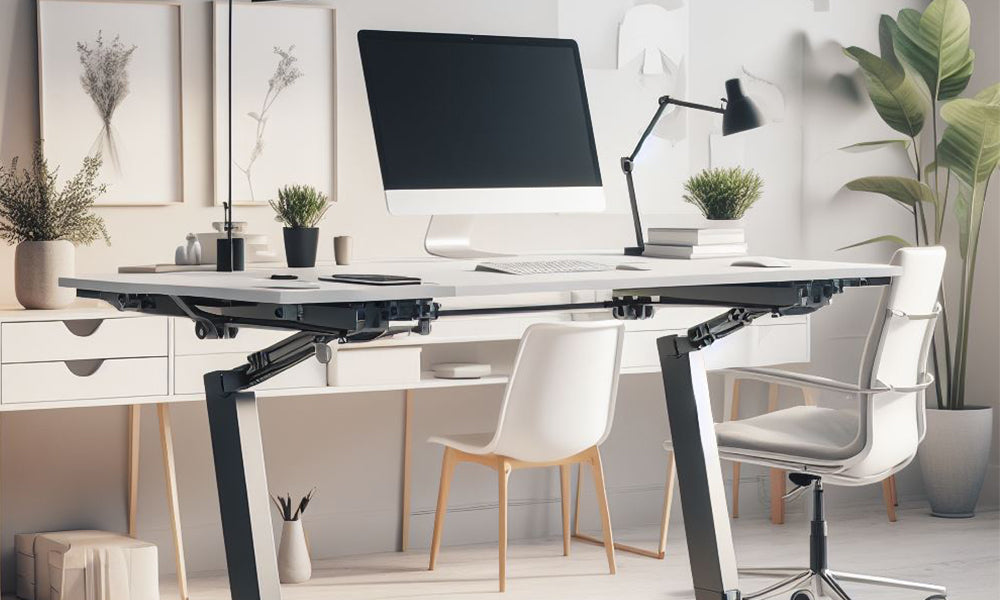In fast-paced world, where long hours are spent working at desks and computers, back pain has become an increasingly common issue. One of the key contributors to this problem is the lack of proper ergonomic support in office furniture, particularly chairs. This article will delve into the relationship between ergonomic chairs and back pain, offering valuable tips for relief and prevention.
Understanding the Link Between Chairs and Back Pain
The Impact of Poor Ergonomics:
Many individuals spend a significant portion of their day sitting, whether at work or during leisure activities. Poorly designed chairs with inadequate support can lead to various musculoskeletal problems, with back pain being a prevalent issue.
When chairs lack ergonomic features, individuals may adopt improper sitting postures, leading to strain on the spine and supporting muscles. Over time, this can result in chronic back pain and discomfort.
The Role of Ergonomic Chairs:
Ergonomic chairs are specifically designed to provide optimal support for the body's natural alignment. These chairs aim to reduce stress on the spine, promote good posture, and enhance overall comfort. Investing in a quality ergonomic chair can significantly contribute to preventing and alleviating back pain.
Key Features of Ergonomic Chairs for Back Pain Relief
1. Lumbar Support:
A crucial feature of ergonomic chairs is proper lumbar support. The lumbar region, or the lower back, bears much of the body's weight and is susceptible to strain. A chair with adjustable lumbar support ensures that the lower back maintains its natural curve, reducing the risk of discomfort and pain.
2. Adjustable Height and Seat Depth:
Ergonomic chairs should allow users to customize the height and seat depth to accommodate their individual body dimensions. This ensures that the feet are flat on the floor and the knees are at a 90-degree angle, promoting a neutral spine position.
3. Seat Cushioning:
Quality cushioning is essential for prolonged comfort. Ergonomic chairs often feature high-density foam or memory foam in their seat cushions, providing adequate support while distributing weight evenly.
4. Adjustable Armrests:
Armrests that are too high or too low can lead to shoulder and neck strain, affecting the overall posture. Ergonomic chairs with adjustable armrests enable users to position their arms comfortably, reducing tension in the upper body.
5. Swivel and Mobility:
The ability to swivel and move easily is another important aspect of ergonomic chairs. This feature allows users to reach various parts of their workspace without straining their backs, reducing the risk of injury.
6. Breathable Materials:
Chairs made from breathable materials prevent discomfort caused by excessive heat and moisture. This is particularly important for individuals who spend extended periods seated.
Tips for Choosing the Right Ergonomic Chair
1. Test Before Purchase:
Before investing in an ergonomic chair, it's essential to test different models. Factors such as personal comfort, adjustability, and durability should be considered. Many office furniture suppliers offer the opportunity to try chairs before making a purchase.
2. Consider Your Work Environment:
The type of work and the surrounding environment should influence the choice of an ergonomic chair. For instance, individuals working on computers may benefit from chairs with added neck and head support.
3. Budget Considerations:
While quality ergonomic chairs may come with a higher price tag, the investment in preventing back pain and promoting overall well-being is invaluable. Consider it a long-term investment in your health.
Additional Tips for Back Pain Relief and Prevention
1. Take Regular Breaks:
Regardless of the chair's ergonomic features, it's crucial to take breaks from prolonged sitting. Stand up, stretch, and move around every 30 minutes to promote blood circulation and reduce muscle stiffness.
2. Incorporate Stretching Exercises:
Simple stretching exercises can help alleviate back pain and improve flexibility. Consult with a healthcare professional or a certified fitness trainer to develop a routine tailored to your needs.
3. Maintain Proper Posture:
Even with the best ergonomic chair, maintaining proper posture is essential. Sit back in the chair, keeping your back straight, and avoid slouching to reduce stress on the spine.
4. Stay Active Outside of Work:
Engaging in regular physical activity outside of work hours is crucial for overall health. Strengthening the core muscles and promoting flexibility can contribute to a healthier back.
Conclusion
In conclusion, the relationship between ergonomic chairs and back pain is undeniable. Investing in a chair that supports the natural alignment of the spine can significantly contribute to relief and prevention of back pain. By understanding the key features of ergonomic chairs and implementing additional tips for back pain management, individuals can create a healthier and more comfortable work environment.
Remember, the goal is not only to alleviate existing back pain but also to prevent it from becoming a chronic issue. Prioritize your health and well-being by making informed choices about your office furniture, and take proactive measures to maintain a healthy and pain-free back.






Commenta
Questo sito è protetto da hCaptcha e applica le Norme sulla privacy e i Termini di servizio di hCaptcha.